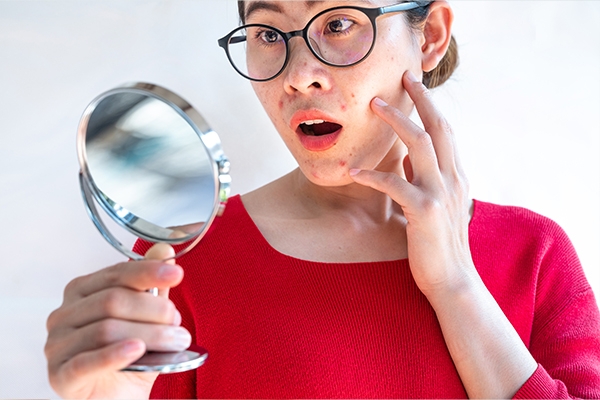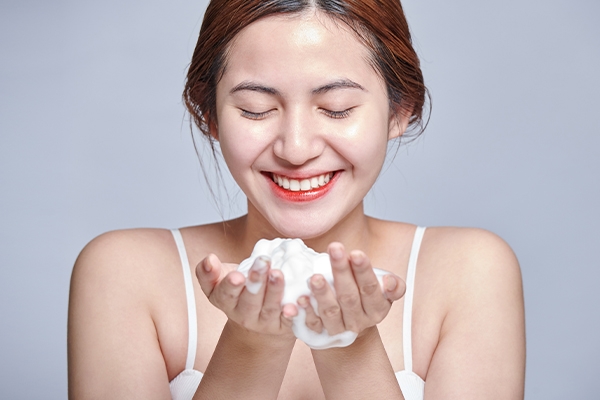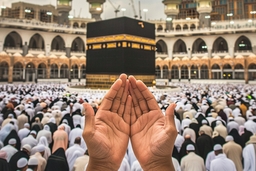Winning the Battle Against Acne

Acne is one of the most common skin problems that both teenagers and adults face. It frequently appears without apologies. Make ourselves insecure. Is it possible to win the battle against acne?
Acne is a skin condition caused by excessive oil (sebum) production. Each pore contains a follicle that contains oil glands and hair. Pimples are caused by the blockage of hair follicles by oil and dead cells.
Other factors, like bacteria, hormones, and cosmetics, can also contribute to the formation of acne. Propionibacterium acnes, which grows and clogs hair follicles, is one of the bacteria that causes acne.
This obstruction promotes irritation, which is known as acne.
Meanwhile, excess androgen hormones or hormonal shifts during menstruation might cause acne to emerge. What about cosmetics? Yes, certain cosmetics can cause acne because certain types of facial skin cannot tolerate the substances.
If acne has already appeared, please do not touch or squeeze it. None of these acts reduce inflammation; instead, they aggravate it. If you do it with dirty hands, you risk infecting yourself or causing scar tissue or pockmarks to form.
Know your acne!
Acne comes in a variety of forms. One of these is fungus acne (Pityrosporum folliculitis). These acnes form as a result of fungus growth in the hair follicles. Induce an itchy and inflammatory skin area.
Acne nodules are inflammatory pimples that grow in the skin's lower layers. It's excruciatingly uncomfortable and difficult to get rid of.
There's also hormonal acne. It appears when there are hormonal changes, such as during puberty, menstruation, pregnancy, menopause, or the use of certain contraceptives.
Another type is cystic acne, which causes big, inflammatory lumps filled with pus. When touched, it is excruciatingly painful. This acne is typically caused by prolonged sun exposure, so don't forget your sunscreen.
What are the symptoms?
Acne symptoms are basically the same: the emergence of tiny bumps on the skin. However, they differ. Here they are.
- Pustules. At the tip, little red lumps filled with pus (papules).
- Papule. A little bump that can change color. It is frequently red to purple or deeper than the skin tone. Caused by inflamed or infected follicles.
- Blackheads. Pores that are clogged with a black top.
- Whiteheads. Pores that are clogged with a white top.
- Nodule. A pus-filled solid mass under the skin. Usually causes pain.
- Cysts. Lumps of fluid (pus) under the skin that are usually painful
Acne can be mild, resulting in a few pimples here and there, or severe, resulting in inflammatory papules. Nodules and cysts are caused by severe acne.
How to prevent it

Wash your face at least twice a day
Use a facial skin-specific soap. Wash your face twice daily, in the morning and evening especially if you have oily skin. If you sweat a lot, wash your face right away. Allowing sweat to dry on its own causes pimples to form.
Choose a mild cleaner
Mild cleansers with no chemical ingredients and perfumes can be used. Apply a small amount to your face to test the efficacy of the product. Then, observe the outcome.
Use anti-acne products
Many acne-fighting products are available. Before you choose, you need to know the type of acne you have:
1. Comedo
Use retinol-containing skin care products to treat blackheads. This product can exfoliate dead skin cells, clear blackheads, and minimize pores.
2. Mild acne
This type of acne can be treated with benzoyl peroxide-containing anti-acne products. It will be more potent when used along with topical retinoids.
3. Acne with inflammation
Remember, don't crush irritated pimples; that will lead to an infection. Acne will actually worsen rather than improve. Apply 5% dapsone gel topically, especially if you are an adult woman.
4. Acne with abdominal tissue
Acne care containing azelaic acid assists in minimizing acne outbreaks and the risk of acne scars. Use a moisturizer after using anti-acne products to keep your skin hydrated.
Apply moisturizer
How can moisturizer aid in the cleansing of your skin? Moisturizers, like cleansers, don't need to have complex ingredients. Choose a moisturizer that will not clog your pores. If you have oily skin, a "light" moisturizer may be ideal to avoid a thick, greasy feeling.
Routine exfoliation
Exfoliation removes dead skin cells from the skin. But don't be too frequent or too rare; 1-2 times a week will be enough. Dead skin cells that are not removed immediately will clog the pores, causing acne. The accumulation of facial skin cells also makes the skin look drab, scaly, and aged.
Choose makeup that does not conceal the pores
Use makeup that does not clog pores and is oil-free. Always wash your hands before applying makeup and again before going to bed. Makeup left on all night will cause pimples on your forehead, cheeks, and chin.
Avoid squeezing pimples
Inflamed pimples might make your hands itch and make you want to squeeze them. You must, however, restrain yourself this time. Squeezing pimples allows bacteria to enter the pores more easily. This increases the likelihood and visibility of acne scars.
Practicing a healthy lifestyle
Although there hasn't been much research on the link between diet and acne, numerous studies have found that foods with a high glycemic index trigger acne. Thus, you should limit your intake of processed foods, avoid sugary drinks like soda, eat more fruits and vegetables, and avoid alcohol.
Mild acne can be treated with benzoyl peroxide, salicylic acid, and sulfur-containing products.
Want glowing, acne-free skin? Visit GWS Medika Springhill Clinic, a facial clinic in North Jakarta, for treatment. This clinic provides various types of skin care according to your needs, including acne facials.



